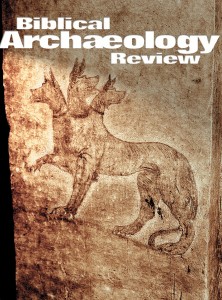Strata: Synagogue Uncovered in Albania
Hebrew University Excavators Join Dig
Almost 20 years after the remains of a fifth-sixth-century A.D. synagogue were uncovered by an Albanian archaeologist, a joint Albanian-Israeli team has gone to the coastal city of Saranda, known in ancient times as Onchesmos, to renew work at the site.
Its efforts shed light on a structure that, though originally believed to have been a church, now appears to have been a synagogue that in later years was transformed into a Christian basilica.
“Apparently the church was incorporated into the existing synagogue,” said Ehud Netzer, who, together with Gideon Foerster, heads the Israeli part or the team. “On the west side [of the basilica] there is a change in the mosaic pavement, with a Greek dedicatory inscription that starts with a cross.” Both Netzer and Foerster are affiliated with the Institute of Archaeology of the Hebrew University in Jerusalem. Albanian archaeologists Kosta Lako (who conducted the original excavation two decades ago) and Etleva Nallbani lead the other half of the team.
The team has been uncovering two mosaics. One is on the northwestern side of the basilica and features a seven-branched menorah flanked by a citron (etrog) and a ram’s horn (shofar), both symbols associated with Jewish holidays and commonly depicted together in ancient synagogue mosaics. The other mosaic is in the center section of the basilica and contains a number of representations, including animals, trees and symbols alluding to Biblical lore. The mosaic also features a facade that resembles a Torah shrine (aron kodesh).
Already a library member? Log in here.
Institution user? Log in with your IP address.

